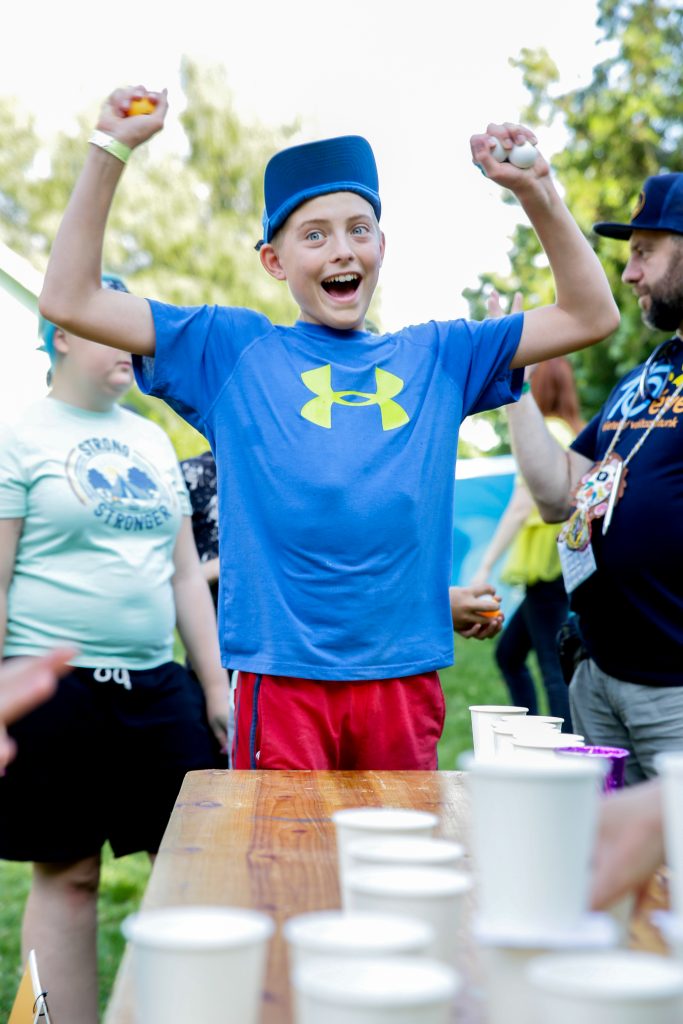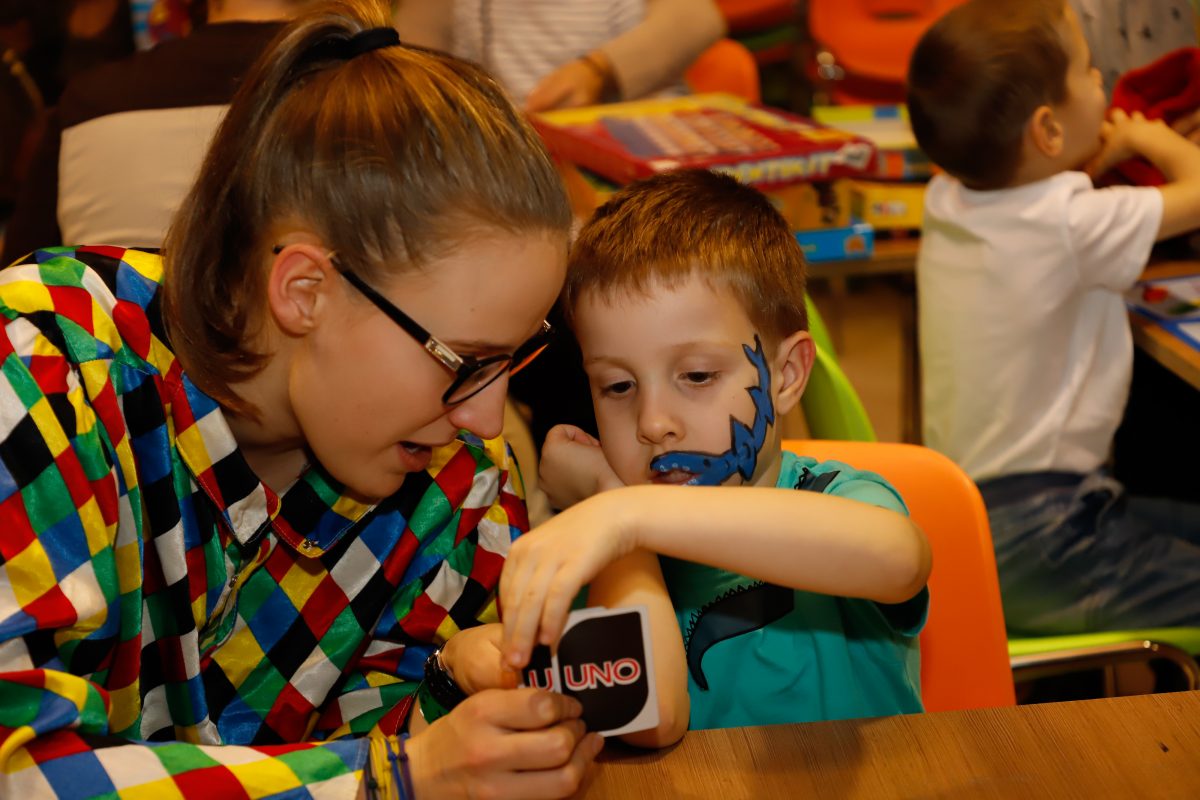Whether you’re looking for a programme for a rainy afternoon or just want to try some quick and new game? We are sure that you will find something exciting from the list below. They can be played with a small number of people that you can come up with anytime.
Statue made of toy cubes
Are you also annoyed when you step accidently on a toy cube in the middle of the room? The next game might help to ease this tense situation!
The family builds a statue of 8-10 toy cubes together. Once you are done, the goal is to raise it as high as possible, but everyone can touch the statue only with their index finger. Raise it as high as you can, then you may place it back one by one on the floor or table again. The statue must stay together! To level it up, you could build a tower from all the cubes lying apart on the floor. So hopefully, it’ll be easier to pack them away. 😉

Tag with dice
When the kids from next door, friends, or relatives come over and run up and down in the house, the next game can come in handy – and it even develops attention and cooperation!
Players are paired, each pair is given a dice/ toy cube / piece of jenga. Players can only touch the cube with their index fingers, and they have to hold it carefully and not to let it fall. They need to move around, walk in the space, first freely and then according to these instructions.
For example:
Squat down and then stand up together!
Jump up together!
Draw a number / letter / word in the air with the cube.
Turn your back against each other while still holding it!
One of the player spins around!
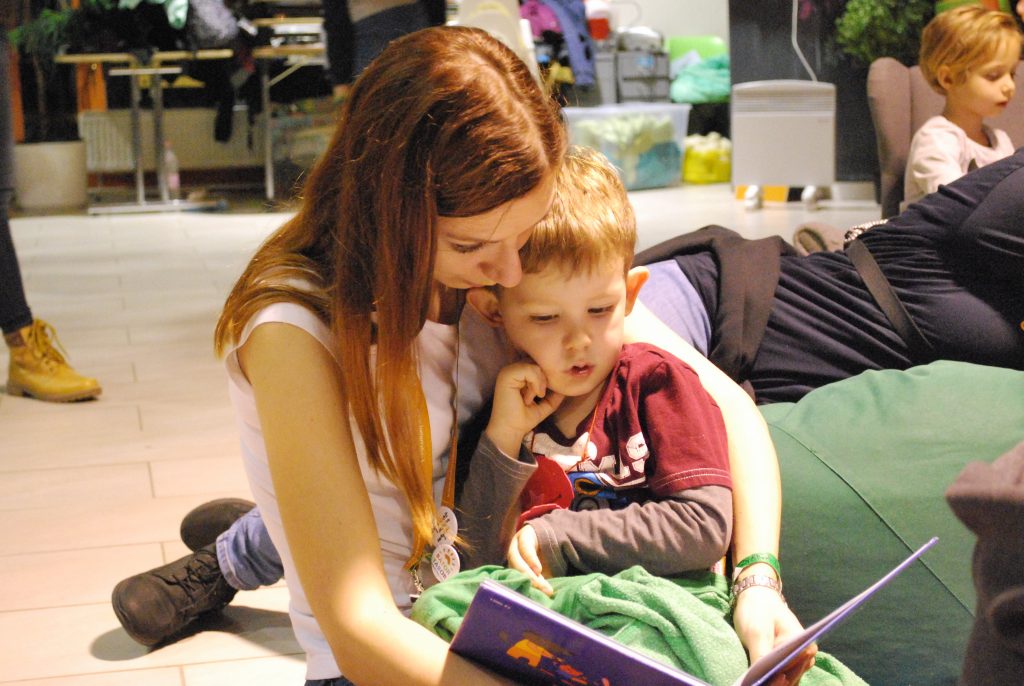
Homemade board game with storytelling
We make a board game out of exciting pictures: each field is a picture. Apart from this board, you will only need some figures [representing the players on the board] and a dice.
The first player starts with a story that comes to his/her mind about the picture he/she has arrived after rolling the dice. The next player continues the same common story and adds his/her own chapter to it based on the theme and mood of the picture where he/she stands with his/her figure.
Variation:
You can select the pictures and build up the board together with the children.
Do you remember? / How was it?
Place objects / pictures / word cards side by side on the table.
Give the children some time to memorize the cards, then put the objects (pictures) away. The task is to rearrange them in the original order.
Treasure hunt
Treasure hunt can come in handy at a party or on a rainy afternoon, but it is also a must to know to every babysitter.
Cut a picture into 10 pieces and hide them in the house/garden. Players need to find all the puzzles, then put out the original picture from the pieces.
Variation:
With the chosen picture you can also play a story-telling / detective game. Or with more complex pictures you can also search for colours and shapes in the house.
Games with paper and pencil only
If you don’t have anything but some paper and a pencil, time will fly with the following games for sure!
Who am I?
It is a great and fun game that can be played either in pairs or in larger groups and gives an exciting time for all ages.
Each player writes a name on a piece of paper – it can be a fairy tale/cartoon hero, a movie character, a famous person, but the point is that everyone should know this character. Then give the paper to the person next to you so that he/she doesn’t see what’s written on it. Then everyone puts the paper on their foreheads – it’s a funny scene in itself – and the game can start.
The goal is that you find out what’s written on your head by asking questions. In each round, everyone asks 1-1 question, and the others answer. For example: Am I a real person or a fictional character? Am I a human being or an animal? Whoever guesses first, wins the game. You should only tell out loud the solution, if you are absolutely sure of your guess!
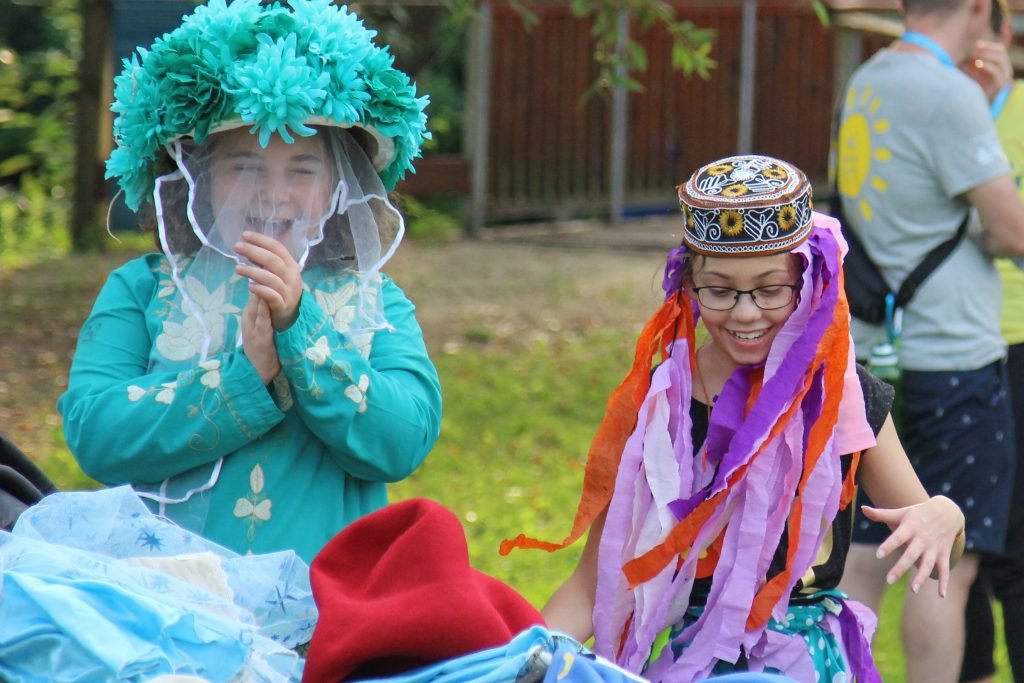
Drawing from shapes
With the smaller kids, we can easily draw animals, some fruit, or even human figures from numbers, letters, and simpler geometric shapes. Only our imagination can set a limit to the figures!
For example:
What animal number 2 could be?
What fruit could become form the letter A?
Here is a triangle – let’s say it’s a man’s head, draw its face, hair, and so on.
Sentence-drawing association
The next game is perfect for team building, or even at home for family recreation. The result will be fun for sure!
All of you write a complex sentence on a piece of paper. You give the paper to the person sitting next to you, who reads the sentence and folds it so that the sentence is not visible. Then he/she draws a picture based on what was written on the paper.
Then he/she passes the drawing again to the next person. In this round, after folding down the drawing, this person needs to describe/write down what he/she sees on the drawing (writes a sentence which could have inspired the drawer to create this picture), and the game continues on this way. After a full round, read the pages: with the power of community really funny results can come out from the original sentences.
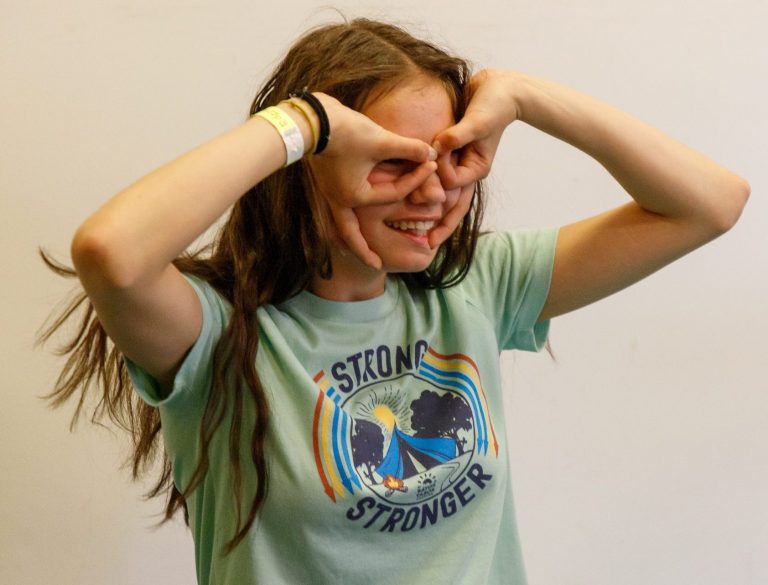
Draw what I say!
This game can be played in pairs either on a longer train journey or during a longer waiting.
You sit back to back. You are secret agents / detectives. One of you can only talk and the other can only draw. The speaker imagines a ‘secret figure’ that he/she describes to his partner who follows the description and tries to create a drawing. The speaker player guides his partner step by step and thus, helps the drawer to create the drawing.
The power of words – games with word cards
For setting up the game, all you have to do is write down randomly chosen words on colourful paper cards / sheets of paper. If you want to practise a foreign language, you may write down these words in that language. Place as many words as possible in for example, a box, a hat, or a bag. It is a great game to play with teenagers, but it can also be an exciting challenge for adults. It is an excellent way to improve your association skills.
A few ideas to play:
- Cuckoo Eggs [when something does not belong to the rest as it is strikingly different]: Pull 4 random words from the box and prove that one of them does not fit to the rest!
- Grouping: Choose 6 random words and divide them into two groups of three. Explain your choice of grouping [the reason why you did it this way].
- Keywords: One member of the pair pulls 3 words out of the word box, and creates a sentence from them. Your partner needs to figure out what were the 3 words!
- Word Bridge: Pick 5 random words and then choose two of them. These two words will be the end of the bridge. Now arrange the remaining 3 words on the bridge. Each word must somehow be related to the word next to it, so that you can “pass” smoothly from one end of the bridge to the other. What is the connection between the words?
Variation 1: the game can be played with pictures (and even objects, costumes)
Variation2: play with more words!
Games without any tool
You can play the following games anytime and anywhere, even if you do not have any tools with you. They improve perception and sensation, and give exciting challenges for all age groups, from kids to teenagers.
Squirrels on the tree
The next game is recommended for bigger family events, or parties, or even babysitters looking after several children.
The group should stroll around in the room (you can tell them in what style they can move). The coordinator of the game suddenly shouts: “There are 3 squirrels on the tree!” Then 5 people have to get together: 3 ‘squirrels’ come to the middle, who are surrounded by the two ‘trees’ (the trees hold each other’s hands forming a circle around the squirrels). Then all the participants are slowly moving around again, and the instructor yells another number of squirrels (remember to add the two extra people to the number and they form the ‘tree’).
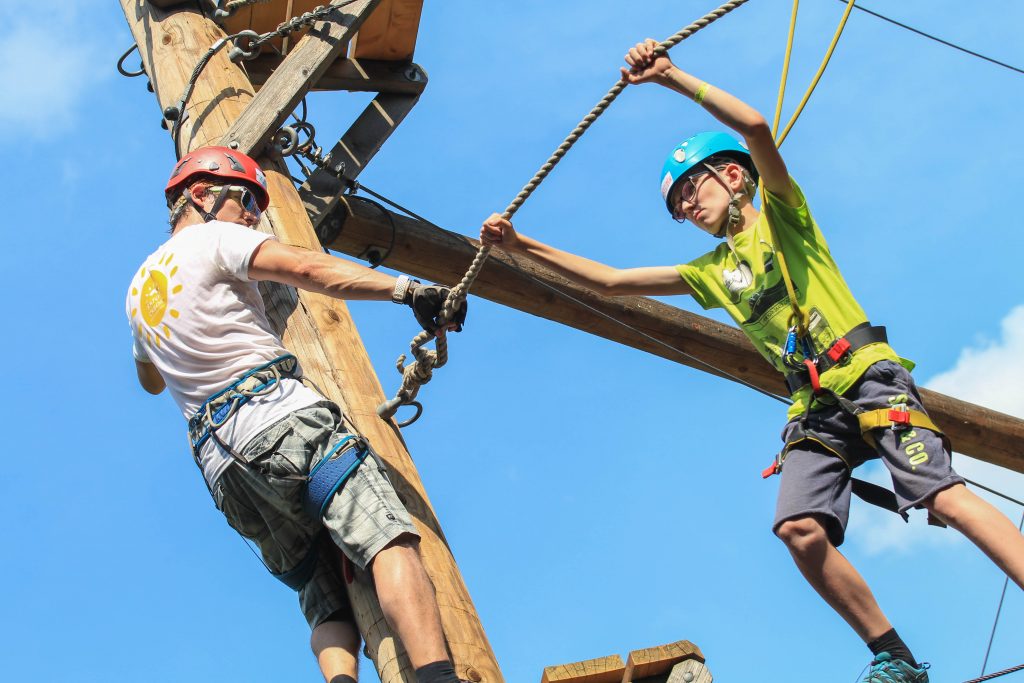
Imitate
One of the players closes his eyes. The other player shows a facial expression or a gesture, then the first player opens his eyes, and s/he tries to imitate as precisely as possible the gesture or facial expression s/he sees.
Opposite emotions
One of the players makes a facial expression, a gesture or some emotion with his/her all body. The other standing opposite responds by expressing exactly the opposite of what s/he sees.
Reverse!
For the smaller ones, this game really improves the right/left side discrimination, and for the older ones, it is a real brain exercise due to the quick response it requires! A player says “This is my right shoulder” but in the meantime points to his right knee. The others respond immediately to this, “This is my right knee” – while pointing to their left shoulder. You can point to any body parts that are in pairs.
Mirror, mirror on the wall
We are standing face to face. One of us is the prince or princess, the other is the mirror. The prince or princess gets dressed, does stretching exercises, and so on. And the ‘mirror’ shows all the movements. Of course, any other theme can be used for this imitation game.
Find it, guess it!
The following ideas develop reaction time, association skills, and can even be the starting point for an exciting conversation:
Here are these 3 objects, they are members of a family: name them! What could be their occupation, what do they like eating, what do you think they do in their free time?
Here is an object, what do you think the UFOs who don’t know what it is really used for, would use it?
Clap the rhythm of a sentence, feeling, and I’ll figure out what you mean!
Find 3 red things in the room (let’s say in 10 seconds)!
Name the smallest / largest object in the room.
What is the lightest / darkest colour in the room? What is most similar to a dog / spaceship / human?
